Disclosure: Meeple Mountain received a free copy of this product in exchange for an honest, unbiased review. This review is not intended to be an endorsement.
Tenpenny Parks is the newest game from Thunderworks Games (Roll Player, Cartographers) and it feels a bit like the recent Thunderworks release Cape May in many ways.
Both games are easy to teach, feature good artwork, offer an almost luxurious level of production, and give players a lightweight puzzle to go along with basic modern game design elements. You’ll get all of this in a gaming experience that wraps quickly; in the case of Tenpenny Parks, about 15 minutes per player.
As long as you tailor the experience to your audience, Tenpenny Parks will land well. Hardcore/serious gamers will want to look elsewhere. For everyone else, let’s talk about why I think Tenpenny Parks works so well!
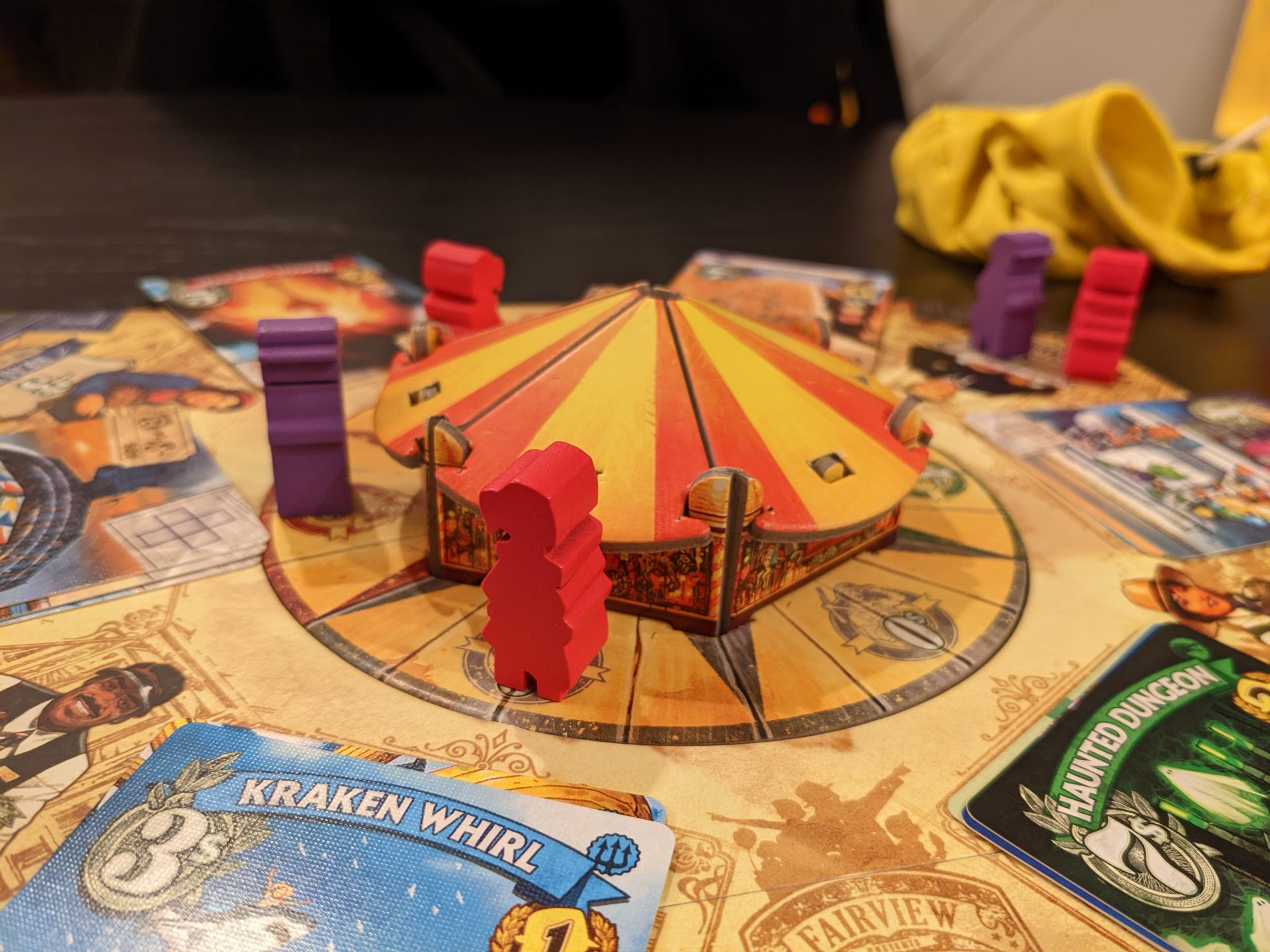
Complexity, Dialed Down
I am fortunate to play games with a wide range of audiences.
I play games with 4 different groups in the greater Chicago area. Three of these groups prefer midweight-to-heavy strategy games, often dense, rules-heavy experiences.
For guidance, let’s use the BGG “complexity” rating: the majority of my gaming friends like their games in the 3.5 range and above. Great Western Trail is an ideal starting point for these groups (a BGG average complexity rating of 3.71). It has lots of complex decisions, lots of rules, lots of processes, and requires multiple plays to get the overarching strategies honed correctly.
Your goal? Build the best theme park. A heavier design might turn Tenpenny Parks into a simulation with lots more nuts and bolts around staffing, or ride maintenance, or events that might change the rules of a particular round.
Designer Nate Linhart has, instead, given us a game that landed well with my gaming groups thanks to a simplification of the entire affair. Players get 5 rounds to place 3-4 workers per round on the main board to take actions. Using a mix of private goals, “advertising”, achievement tracks, and other scoring techniques, players attempt to score points while also placing Tetris-style polyomino pieces (representing attractions and concessions) on their player board.

Boards are double-sided, representing differing difficulty levels of your amusement park, and are filled with bonuses that can be earned by covering those spaces with your tiles.
Making this activity more interesting: treeples! Yes, trees add not only a nice visual element to Tenpenny Parks, but also a hazard that must be accommodated to get those rides into your park. It’s certainly not a massive mental puzzle, but the different tile shapes add fun planning elements to each of your actions.
The centerpiece of the board is a carousel with 6 spaces aligned to the 6 different decks of attractions in the game. You could place a worker on one of the carousel spaces, which lets you buy an attraction for a price that fluctuates based on the modifier in your space (a swing of +/- $2). Attractions align with scoring, both between rounds on the game’s three tracks (Thrill, Awe, Excitement) and at the end of play.
Other actions let you grab a couple of bucks from a banker, remove trees from your player board, add smaller player boards to the ends of your park, and add one-tile concessions to your park, which provide small bonuses and income, paid at the beginning of each round.
After taking actions, you’ll be able to spend cash to advertise your built attractions, generating more points. Then the leader on each track gets a bonus, such as an extra worker or cash. Then the first player will rotate the carousel to ensure each round’s card market prices differ before doing it all again.
End game points are easy to tally. Private goals, attraction scores, and placement on tracks all earn points. An additional bonus comes when a player has built a certain number of attractions, then winners are declared. I’ve only played this game 4 times, but the tiebreaker has already come into play once: the player with the most leftover cash wins.
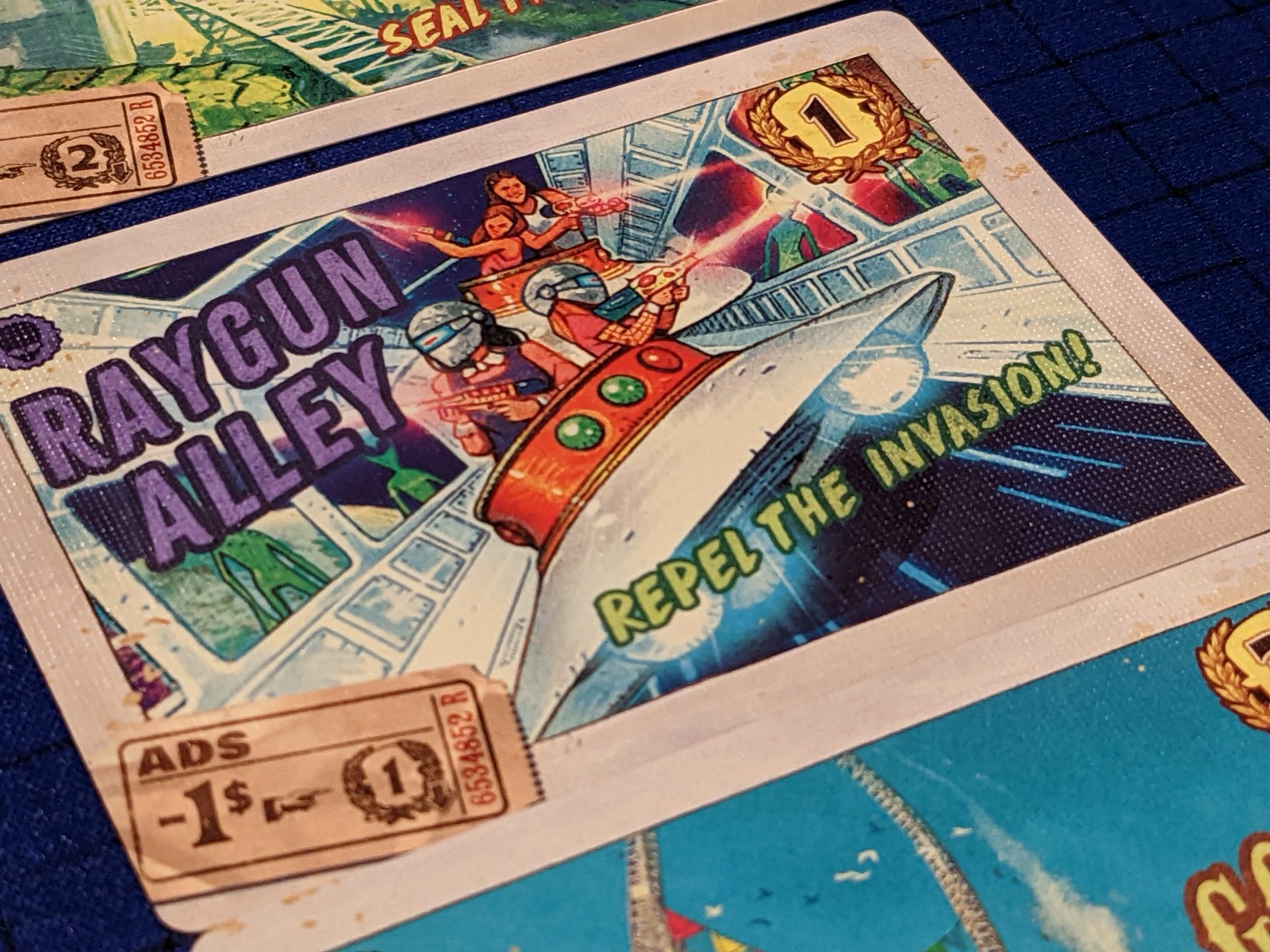
You Like to Feast, Eh?
More than once while playing Tenpenny Parks, someone compared its Tetris-like puzzle to A Feast for Odin, a much heavier game which features polyominoes and worker placement and buying side boards to continue building polyominoes across your tableau.
It is fair, then, to consider the comparison with A Feast for Odin when considering the types of players each game suits best.
It would be a leap to say that if you love A Feast for Odin, you’ll love Tenpenny Parks. The complexity is dialed WAY down in Tenpenny Parks. As a result, Tenpenny Parks is also a much, much shorter game. My first two games of Tenpenny Parks were played in about 90 minutes total at three players. I’ve never played a three-player game of A Feast for Odin in less than two hours.
Given all of this, I prefer Tenpenny Parks.
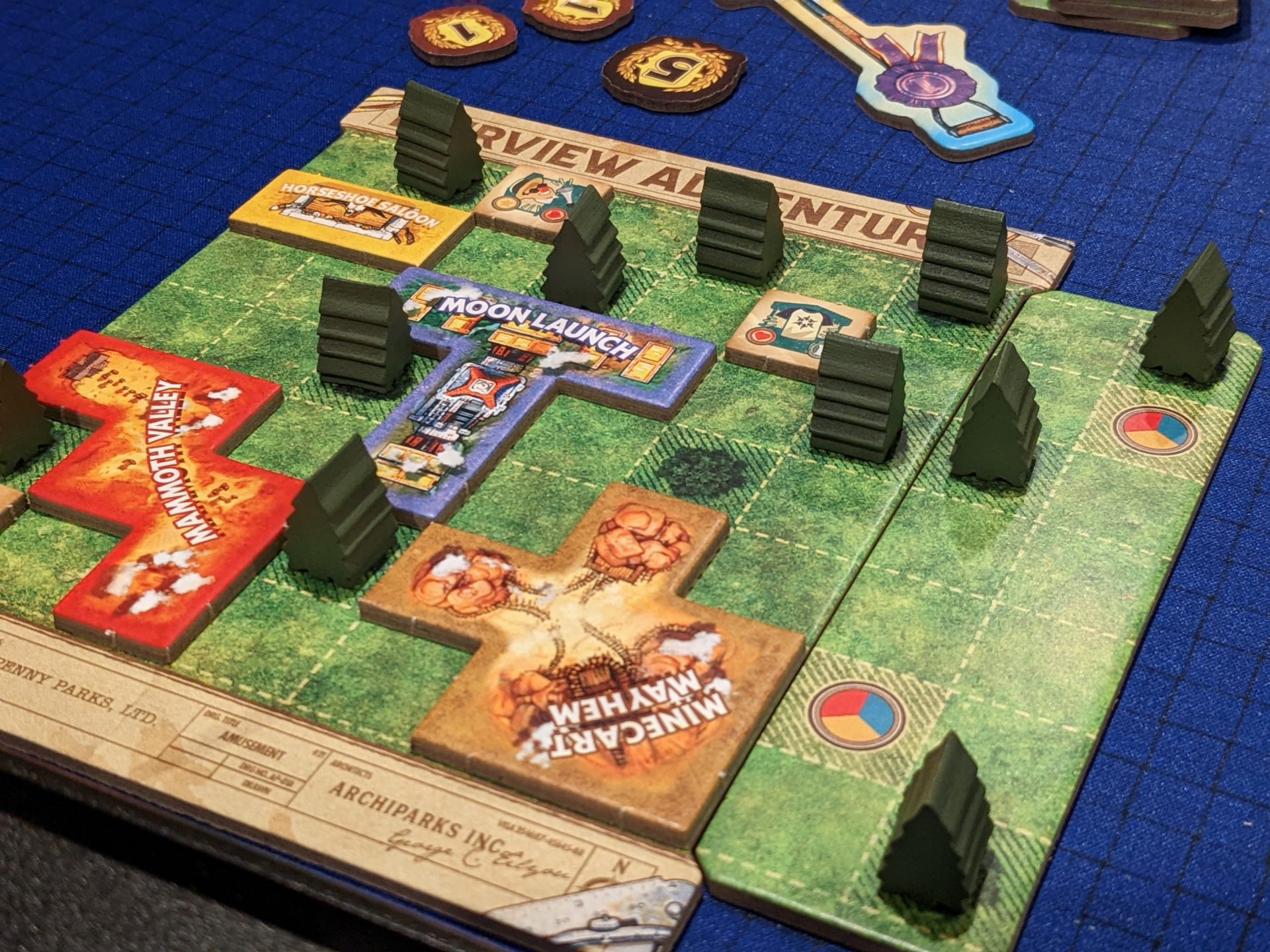
A Feast for Odin is a classic. A Feast for Odin is ranked as the #22 game all-time on BGG; it might be the best game of its type ever made.
But I lean light. I definitely lean lighter than A Feast for Odin (a BGG complexity of 3.85), and I struggle to get games like it to the table when I’m not playing with my heavy strategy gaming friends.
Tenpenny Parks? I’ll be able to play this with my wife while waiting for a casserole to finish in the oven and the kids are destroying my basement. I love Tetris. I love theme parks. In wanting to share my love of gaming with the world, I can safely—VERY safely—introduce Tenpenny Parks to gamers new to the hobby, or to people who have no desire to turn gaming into their next hobby, or family members who struggle with heavy rules.
And if I play Tenpenny Parks with core gamers, they will still enjoy themselves. I’ll just expect them to label the game as too light. No problem. I’m going to put it on the table because lighter games like this balance a night with heavier content nicely.
I can teach Tenpenny Parks from the player aid cards. The production is going to impress everyone (boy, those super-thick money tokens are the bee’s knees!!), and we can sweep it out of the way in under an hour to get to the night’s chicken dinner to the table in short order.
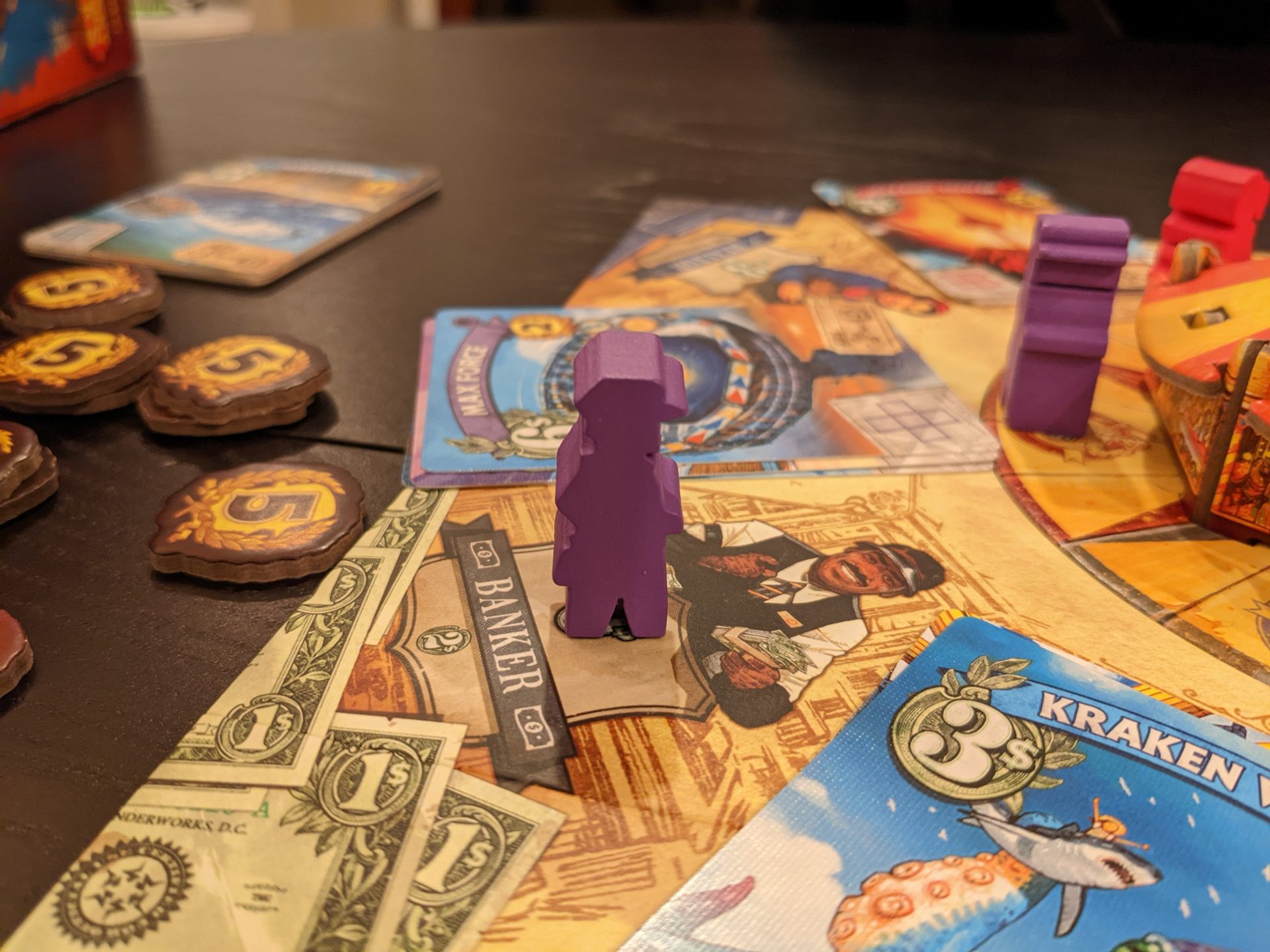
Book It!
Tenpenny Parks continues the great run of Thunderworks Games, however just know that it is not perfect.
My main issue with the game is my sense of its extended shelf life. I’m not sure that I will come back to Tenpenny Parks after 10 plays without additional content.
Even after only 4 plays, players are always chasing the attractions that grant Advertising points for cash at a 1:1 ratio. Anytime a player sees that you can spend, say, $2 for 2 points, that player is building that attraction if they can fit it on their player board. It’s also worth building the same concessions (the hot dog stand, for sure) every time to boost income.
The game’s MSRP feels high for a lighter, shorter experience; Tenpenny Parks is basically a blinged-out family game, and $60 for that feels $10-$15 north of comfortable.
Still, I’m having a lot of fun with this one. Tenpenny Parks has a solo mode to keep you warm between plays with friends, albeit one that seems to break the feeling of the core game because the Automa buys 2 attractions every round. I have never seen another human player build more than 8 in a single game because cash is too tight to spend so freely, so expect a nice challenge if you decide to give solo a spin.
Play Tenpenny Parks with the right audience and you will have a blast!


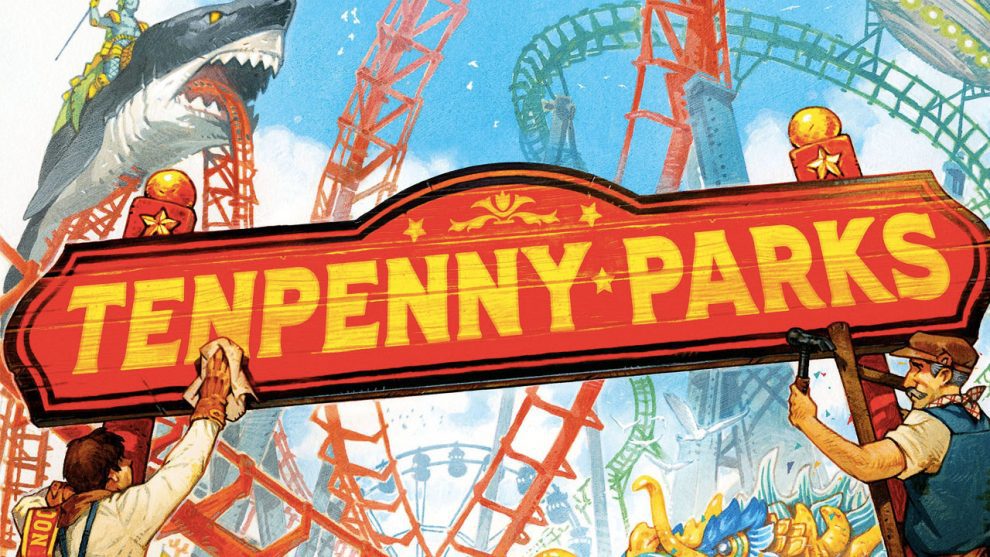









Add Comment